
FOUNDATIONS OF PHYSICS
Scope & Guideline
Advancing Understanding Through Philosophical Inquiry
Introduction
Aims and Scopes
- Quantum Foundations and Interpretations:
The journal extensively covers various interpretations of quantum mechanics, including ontological and epistemic perspectives, examining foundational issues such as the nature of the wave function, measurement problems, and the implications of different quantum theories. - Philosophical Implications of Physics:
Papers often delve into the philosophical aspects of physical theories, addressing questions about realism, determinism, and the nature of reality in light of contemporary physics. This includes discussions on topics such as the implications of quantum entanglement and the nature of time. - Relational and Contextual Approaches:
A significant focus is placed on relational quantum mechanics and contextuality, exploring how these frameworks challenge traditional notions of objectivity and locality in physics. - Emergent Phenomena and Complex Systems:
The journal also investigates emergent phenomena in physics, particularly how complex systems can arise from simpler interactions, adding depth to discussions about statistical mechanics and thermodynamics. - Interdisciplinary Approaches:
There is a notable interest in interdisciplinary approaches that bridge physics with other fields, such as mathematics, cognitive science, and philosophy, fostering a broader understanding of physical theories.
Trending and Emerging
- Quantum Information and Computation:
There is a notable increase in papers discussing quantum information theory and its implications for quantum mechanics. This trend highlights the importance of information as a fundamental concept in understanding quantum systems and their behaviors. - Philosophical Perspectives on Quantum Mechanics:
Recent publications are increasingly exploring the philosophical implications of quantum mechanics, particularly in relation to realism, the nature of measurement, and the interpretation of quantum states. This trend underscores a growing recognition of the interplay between physics and philosophy. - Entanglement and Non-Locality:
Research focusing on entanglement and its implications for locality and causality is on the rise. This reflects an ongoing interest in exploring the foundational aspects of quantum mechanics and the challenges they pose to classical intuitions. - Emergence and Complexity in Quantum Systems:
There is an emerging focus on understanding how complex behaviors and emergent phenomena arise in quantum systems. This theme encompasses studies on quantum phase transitions and the role of entanglement in complex systems, indicating a shift towards recognizing the importance of emergent properties. - Stochastic and Non-Local Models:
Papers exploring stochastic models and non-local interpretations of quantum mechanics are gaining traction. This indicates a trend towards investigating alternative frameworks that challenge traditional views on locality and determinism, reflecting the ongoing evolution of quantum theory.
Declining or Waning
- Classical Physics Foundations:
Topics related to classical physics foundations, such as detailed explorations of classical mechanics or traditional electromagnetism, are becoming less frequent. The journal is increasingly focused on quantum and relativistic discussions, suggesting a waning interest in classical frameworks. - Deterministic Models in Quantum Mechanics:
The once-popular deterministic interpretations of quantum mechanics, such as those relying on strict causal models, are appearing less frequently. There seems to be a shift towards embracing probabilistic and non-deterministic frameworks, reflecting broader acceptance of quantum uncertainty. - Simplistic Ontological Models:
Simplistic or overly reductionist models that attempt to explain quantum phenomena without acknowledging their complexities are being phased out. The journal is increasingly favoring nuanced discussions that recognize the intricate nature of quantum systems.
Similar Journals

JOURNAL OF STATISTICAL PHYSICS
Fostering innovation through rigorous academic discourse.The Journal of Statistical Physics, published by Springer, is a premier academic journal that has made significant contributions to the fields of Mathematical Physics and Statistical and Nonlinear Physics since its inception in 1969. With a strong reputation reflected in its 2023 rankings—placing it in Q2 of both categories and achieving an impressive Scopus rank of #22 in Mathematical Physics and #25 in Statistical and Nonlinear Physics—this journal serves as a vital platform for researchers, professionals, and students. The impact factor of the journal underscores its importance in disseminating cutting-edge research and theoretical developments. Authors are invited to submit original research articles that explore the intricate complexities of statistical mechanics, quantum physics, and related disciplines, fostering deep insights and academic discourse. Although the journal does not currently offer open access, its robust editorial standards and commitment to advancing knowledge make it an essential resource for those engaged in these dynamic fields.
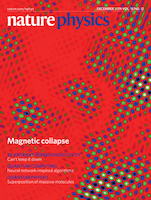
Nature Physics
Championing Excellence in Physics Research and CollaborationNature Physics is a premier journal dedicated to publishing high-impact research in the realm of physics, brought to you by the esteemed NATURE PORTFOLIO. With its ISSN 1745-2473 and E-ISSN 1745-2481, this journal has established itself as a vital resource for the physics community, enjoying a remarkable Q1 quartile ranking in the Physics and Astronomy category for 2023 and securing an impressive Rank #5/243 and a 98th percentile ranking in Scopus. Since its inception in 2005, Nature Physics has become a catalyst for innovation, featuring cutting-edge research that encompasses a broad spectrum of physics disciplines. Although it operates under traditional subscription models, it maintains a commitment to accessibility through selective publications and editorial excellence. Positioned in Berlin, Germany, this journal is a must-read for researchers, professionals, and students who seek to stay at the forefront of advancements in physics.
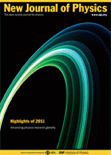
NEW JOURNAL OF PHYSICS
Bridging theory and practice in contemporary physics.NEW JOURNAL OF PHYSICS, published by IOP Publishing Ltd, is a prestigious open-access journal that has been at the forefront of the physics community since its inception in 1998. With an impact factor that places it in the Q1 category of Physics and Astronomy (miscellaneous) and a commendable ranking of #49 out of 243 in the general physics and astronomy category according to Scopus, this journal is recognized for its significant contribution to advancing research in the field. The journal caters to a broad scope of topics, providing a platform for the dissemination of cutting-edge research findings and innovative theoretical explorations. Operating from the United Kingdom, it offers a truly international perspective, making its contents accessible and impactful to a global audience. With robust open-access options, the NEW JOURNAL OF PHYSICS ensures that research findings are freely available, promoting collaboration and knowledge sharing among researchers, professionals, and students alike. This commitment to accessibility, combined with its high-quality content, makes it an essential resource for anyone engaged in the physics community.
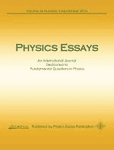
PHYSICS ESSAYS
Advancing Knowledge Through Unique PerspectivesPHYSICS ESSAYS, published by PHYSICS ESSAYS PUBLICATION, serves as a unique and influential platform within the field of Physics and Astronomy. With an ISSN of 0836-1398 and an E-ISSN of 2371-2236, this journal fosters the dissemination of innovative ideas and rigorous research, encouraging contributions that challenge conventional paradigms. Although the journal's Scopus coverage has been discontinued since 2017, it continues to uphold its legacy of scientific inquiry with a focus on pivotal developments in the discipline, garnering a Scopus rank within the 15th percentile. The journal, based in Ottawa, Ontario, Canada, invites submissions that are reflective of its broad scope in experimental, theoretical, and applied physics, appealing to a diverse audience of researchers, professionals, and students alike. While it operates on a non-open access model, the journal remains an essential resource for those seeking to navigate the complexities of modern physics.
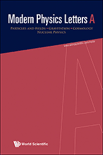
MODERN PHYSICS LETTERS A
Driving Innovation in Physics Through Scholarly DialogueMODERN PHYSICS LETTERS A, published by World Scientific Publishing Co Pte Ltd, is a distinguished journal in the field of physics that serves as a pivotal platform for researchers, professionals, and students alike. With ISSN 0217-7323 and E-ISSN 1793-6632, the journal has gained international acclaim for its contributions to Astronomy and Astrophysics as well as Nuclear and High Energy Physics. The journal is ranked in Q3 for both Astronomy and Astrophysics and Nuclear and High Energy Physics, showcasing its relevance in these areas, while also achieving a Q2 ranking in the broader category of Physics and Astronomy (miscellaneous). Spanning from 1996 to 2024, MODERN PHYSICS LETTERS A promotes open dialogue and dissemination of pioneering research findings and innovative theories. While the journal operates without an open access option, its rich content is easily accessible through various academic databases, ensuring that vital research is shared widely among the scientific community. Situated in Singapore, this journal plays an essential role in the continuous advancement of the physics discipline, fostering collaboration and knowledge sharing among global researchers.
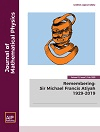
JOURNAL OF MATHEMATICAL PHYSICS
Pioneering research in statistical and nonlinear physics.Welcome to the JOURNAL OF MATHEMATICAL PHYSICS, a distinguished publication dedicated to the burgeoning fields of mathematical physics and statistical and nonlinear physics, published by AIP Publishing. Established in 1960, the journal continually showcases cutting-edge research and theoretical advancements that drive the understanding of complex systems and mathematical formulations within physics. With an impressive Scopus ranking of #38 in Mathematical Physics and #39 in Statistical and Nonlinear Physics, the journal is recognized for its vital contributions to the academic community, achieving a solid Q2 quartile ranking in both categories for 2023. While not an open-access journal, it remains a critical resource for researchers, professionals, and graduate students seeking insights into rigorous mathematical methods and their applications in physical sciences. Engage with the finest research as we converge toward new frontiers from 1960 to 2024, fostering academic collaboration and innovation.

Living Reviews in Relativity
Where Relativity Meets Continuous DiscoveryLiving Reviews in Relativity, published by SPRINGER INT PUBL AG, stands at the forefront of the field of relativity, offering a dynamic platform for the dissemination of high-quality, peer-reviewed research. Since its inception in 1998, this Open Access journal has committed to providing continuous updates and comprehensive reviews, making it an indispensable resource for researchers and scholars in the categories of Physics and Astronomy, where it holds a prestigious Q1 ranking. With its impressive Scopus ranking of #1 out of 81 in the Physics and Astronomy (miscellaneous) category, it boasts a remarkable 99th percentile ranking, underscoring its significance in advancing scientific discourse. Operating out of Switzerland, Living Reviews in Relativity serves as a vital conduit for sharing knowledge and insights, fostering collaborative research, and promoting timeless discussions in the ever-evolving landscape of relativistic physics.
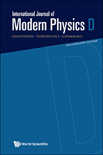
INTERNATIONAL JOURNAL OF MODERN PHYSICS D
Exploring the Cosmos through Rigorous ResearchWelcome to the INTERNATIONAL JOURNAL OF MODERN PHYSICS D, a premier publication dedicated to the advancement of knowledge in the fields of Astronomy and Astrophysics, Mathematical Physics, and Space and Planetary Science. Published by WORLD SCIENTIFIC PUBL CO PTE LTD in Singapore, the journal boasts an impressive impact, being ranked Q2 in Astronomy and Astrophysics and Mathematical Physics, and Q3 in Space and Planetary Science. With a converged publishing timeline from 1996 to 2024, this journal provides a vital platform for researchers and professionals to disseminate their findings, engage with cutting-edge research, and explore emerging ideas in modern physics. Although it operates under a traditional access model, the rigorous peer-reviewed process ensures that only the highest quality research contributes to the collective understanding of our universe. Join us in advancing the frontiers of physics and astronomy!

ANNALES HENRI POINCARE
Pioneering Insights in Statistical and Nonlinear PhysicsANNALES HENRI POINCARE is a prestigious journal published by Springer International Publishing AG, dedicated to advancing research in the fields of Mathematical Physics, Nuclear and High Energy Physics, and Statistical and Nonlinear Physics. With an impressive Q1 ranking in its respective categories as of 2023, this journal is recognized as a vital resource for academic researchers, professionals, and students engaged in frontier studies of theoretical and applied physics. The journal's commitment to high-quality peer-reviewed articles promotes significant contributions to the understanding of complex physical phenomena, making it essential reading for anyone seeking to stay abreast of developments in these dynamic fields. Additionally, ANNALES HENRI POINCARE offers open access options to enhance the visibility and accessibility of groundbreaking research, underscoring its role in fostering collaborative scientific inquiry and innovation. Since its inception in 2000, it has continually provided a platform for scholars worldwide to disseminate their findings and engage with the broader scientific community, thus establishing itself as a cornerstone of academic literature.
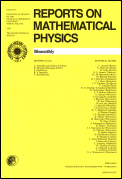
REPORTS ON MATHEMATICAL PHYSICS
Decoding the Language of the Universe through MathREPORTS ON MATHEMATICAL PHYSICS is a distinguished journal published by PERGAMON-ELSEVIER SCIENCE LTD, focusing on the intricate interplay between mathematics and physics. Established in the United Kingdom, this journal has been contributing to the academic community since its inception, publishing significant research findings that explore the theoretical underpinnings of physical phenomena. With an ISSN of 0034-4877 and an E-ISSN of 1879-0674, the journal maintains a consistent publishing history, converging research from 1970 to 2024. It is currently ranked Q3 in both Mathematical Physics and Statistical and Nonlinear Physics categories, reflecting its commitment to maintaining a high standard of scholarly work. Although it lacks Open Access options, its targeted audience of researchers, professionals, and students will find invaluable insights into advanced mathematical methods, statistical applications, and innovative approaches in physics. With its esteemed reputation and critical role in the field, REPORTS ON MATHEMATICAL PHYSICS continues to be an essential resource for those seeking to deepen their understanding of mathematical applications in physical systems.